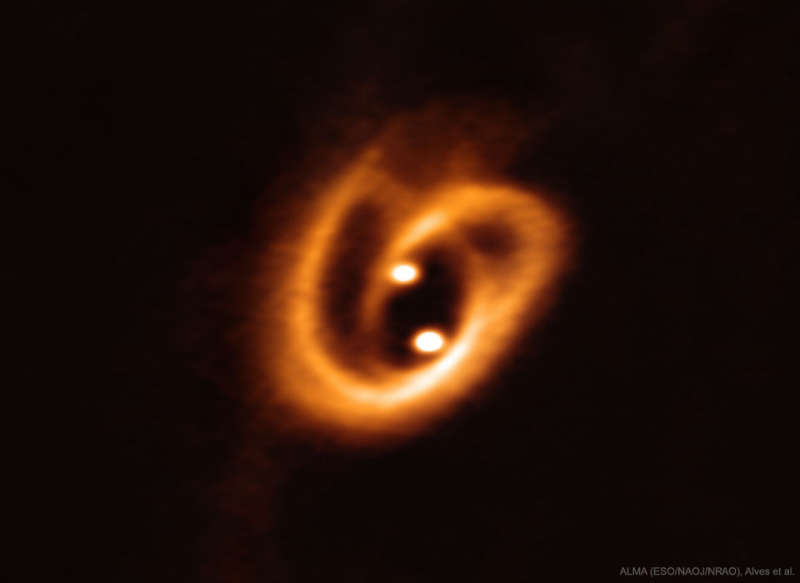Explanation: How do binary stars form? To help find out, ESO's Atacama Large Millimeter Array (ALMA) recently captured one of the highest resolution images yet taken of a binary star system in formation. Most stars are not alone -- they typically form as part of a multiple star systems where star each orbits a common center of gravity. The two bright spots in the featured image are small disks that surround the forming proto-stars in [BHB2007] 11, while the surrounding pretzel-shaped filaments are gas and dust that have been gravitationally pulled from a larger disk. The circumstellar filaments span roughly the radius of the orbit of Neptune. The BHB2007 system is a small part of the Pipe Nebula (also known as Barnard 59), a photogenic network of dust and gas that protrudes from Milky Way's spiral disk in the constellation of Ophiuchus. The binary star formation process should be complete within a few million years.
1999 2000 2001 2002 2003 2004 2005 2006 2007 2008 2009 2010 2011 2012 2013 2014 2015 2016 2017 2018 2019 2020 2021 2022 2023 2024 2025 |
Yanvar' Fevral' Mart Aprel' Mai Iyun' Iyul' Avgust Sentyabr' Oktyabr' Noyabr' Dekabr' |
NASA Web Site Statements, Warnings, and Disclaimers
NASA Official: Jay Norris. Specific rights apply.
A service of: LHEA at NASA / GSFC
& Michigan Tech. U.
|
Publikacii s klyuchevymi slovami:
binary star - dvoinye zvezdy
Publikacii so slovami: binary star - dvoinye zvezdy | |
Sm. takzhe:
Vse publikacii na tu zhe temu >> | |
